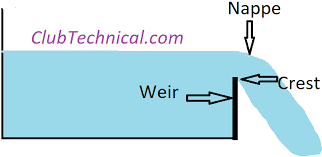CONSTRUCTION ENGINEERS GUIDE TO TMT REINFORCEMENT BARS QUALITY CONTROL
CONSTRUCTION ENGINEERS GUIDE TO TMT
REINFORCEMENT BARS QUALITY CONTROL
CIVIL SITE ENGINEERS GUIDE TO TMT QUALITY CONTROL
In any reinforced concrete
(RCC) construction, two critical components are TMT Rebar and concrete. The
lifespan and safety of such structures heavily rely on the quality of these
Rebars and Concrete.
Designers and engineers
should only approve TMT Rebars after thorough testing and verification,
regardless of the manufacturer’s name.
The first way to check the
quality of reinforcement is to check it mechanical properties.
Mechanical testing serves
two primary purposes:
1.
Providing design data and
2.
Ensuring a structure’s ability to
withstand specific stress limits without failure.
For instance, the tensile
test can determine the yield strength of steel for design calculations or
ensure compliance with material standards.
Mechanical property data
are collected from a small number of standard tests and usually done by th
supplier or by a third-party testing laboratory.
A civil site engineer
stationed at a construction site may encounter limitations in conducting
comprehensive mechanical testing of reinforcing bars within the on-site
laboratory. Consequently, firsthand observation of such testing procedures may
not be feasible.
Individuals who have
undergone relevant training during their academic pursuits possess a
foundational understanding of the mechanics involved in rebar testing.
Nevertheless, there exist
alternative means through which a civil site engineer can ascertain the quality of reinforcing bars, before allowing it
to use.
These are discussed below.
Storage &
Handling:
Typically, reinforcing
bars are supplied in 12-meter lengths and bundled together. A site engineer
should possess the necessary knowledge to accurately estimate the required
quantity of reinforcement for the specific project at hand.
Subsequently, meticulous planning is essential to determine the
appropriate procurement quantity, optimal storage locations, and the space
allocation for storing the bundles of TMT.
Proper storage and
handling of Re-bars at construction sites are crucial.
Due to inadequate storage
facilities, damaged steel is often used.
Various operations involve
handling TMT Re-bars, including
Ø unloading,
Ø hoisting,
Ø stacking,
Ø cutting,
Ø bending,
Ø fabrication,
and
Ø Efficient handling and storage
The quality of
reinforcement in concrete directly affects a structure’s performance. TMT
Re-bars play a vital role in ensuring the safety, integrity, and durability of
concrete structures.
Proper storage, handling,
cutting, bending, quality checking, welding, and cleaning are essential to
maintain their effectiveness.
Stacking &
Storing at the Site:
Storing TMT Re-bars
correctly at construction sites is crucial to maintain product quality.
Steel is sensitive to
water, moisture, and dust. It should be protected from direct contact with
these elements using covered sheds and polythene sheets.
Stacking is also critical
for quality. Stacking height should be optimized, as excessive stacking can
damage the TMT bars’ ribs, reducing tensile and bond strength.
Proper bundling,
interlocking, and blocking from all sides are necessary to prevent sliding or
collapsing.
Raised platforms should be
used to avoid direct contact with the earth, and wooden blocks should separate
layers for even weight distribution.
Systematic housekeeping
procedures and proper product identification further enhance efficiency and
safety.
Bending and
Fabrication:
Bending and re-bending TMT
Re-bars at construction sites must be done carefully to prevent deformation and
breakage. Minimum bend diameters specified in relevant standards should be
followed. Sharp bends can weaken the bars and cause cracks.
Re-bending should be
avoided whenever possible, but when necessary, pre-heating and suitable
equipment should be used.
For consistency and
accuracy, cutting, bending, and fabrication should ideally be performed by
specialist reinforcement fabricators.
Quality Check and
Cleaning:
TMT Re-bars should undergo
quality checks, and any loose scale, mud, or oil should be removed.
Mud and dirt can
negatively impact bond between concrete and TMT bars.
It’s important to
distinguish between light rusting and corrosion, as excessive scaling can
reduce the bar’s weight or deformations, making it substandard.
Rust on
reinforcement steel isn’t necessarily a negative condition. Many engineers and
inspectors still insist on cleaning these materials from the reinforcing bar.
However, rust can improve the bond between the bar and the surrounding
concrete.
Of course, any loose material should
be removed, but firmly attached rust or mill scale is allowed and won’t harm
the bond.
Measuring the loss of cross
sectional area and nominal mass of a Re-bar because of light rusting, can
determine whether the same will be acceptable or not.
To measure the nominal mass of the
rusted bar at site, following steps are to be followed:
1.
A
minimum of 0.5 m long TMT bar is cut.
2.
The
sample is cleaned, and the loose scales are removed with the help of a brush.
3.
The
length (L) is measured and recorded in mm.
4.
The
Weight (W) of the sample is taken with the help of an electronic weighing machine
and recorded in kg.
5.
The
Mass (Kg.) per Meter run is calculated by dividing Weight by Length.
6.
The
cross-sectional area of the sample is calculated as:
Ae = W/(0.00785 x L) mm2
Where,
Ae = effective cross section area,
W is the weight of the TMT in Kg,
L is the length of the TMT in mm.




Comments
Post a Comment